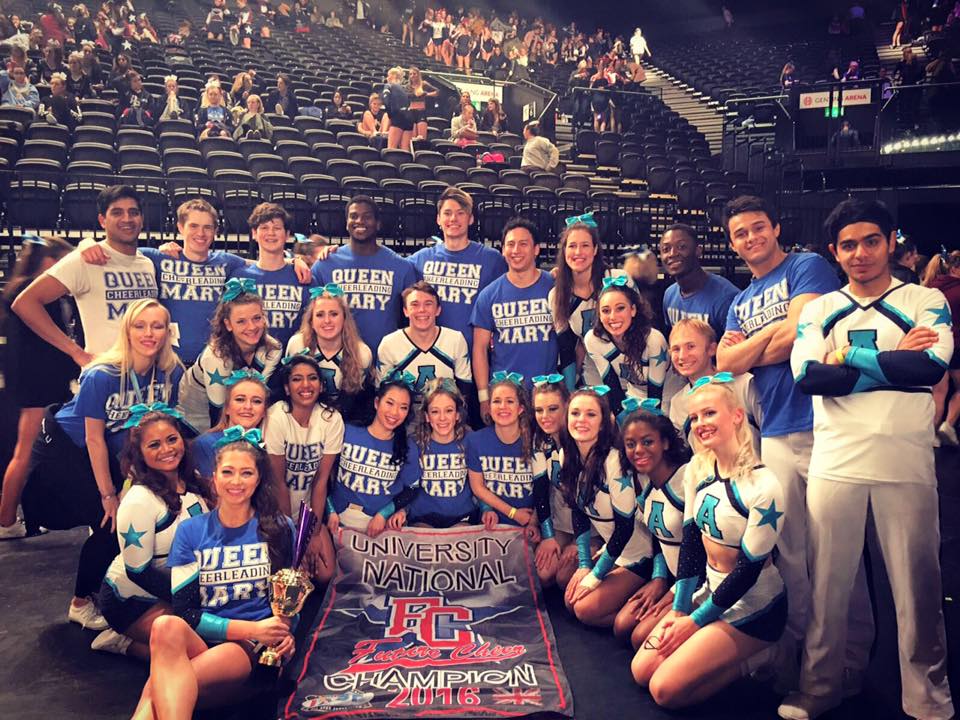When you hear ‘cheerleading’, what comes to mind? At this time, your response may be influenced by the rise in popularity of competitive cheerleading in recent years. The time of cheerleading being a side-line performance to encourage other sports teams is quickly receding into obscurity. In its place, a complex and spectacularly watchable sport is taking the spotlight.
For those unfamiliar with competitive cheerleading, it’s garnering a staggering presence in the UK, with the vast majority of universities now offering a competitive cheer team among their sports clubs. As a performance sport, cheer consists of four main elements: floor tumbling (gymnastics), stunting, jumps, and dance.

Floor tumbling is a gymnastic discipline which you might be familiar with from viewing the Olympics. Tumbling in cheer is the same, but at a lower difficulty level. One of the reasons for this is because cheerleaders tend to have significantly less formal training than their gymnastic counterparts. Another reason is because, in order to score highly, a routine must have a certain number of ‘running’ and ‘standing’ tumbling passes, so the skills have to be possible for a large number of athletes to master and perform several times in a routine.
Stunting is the most visually striking element of cheer, and with tumbling makes up the majority of each team’s two and a half minute routines. Stunting involves lifting people known as ‘flyers’ into the air, and there can be anywhere from four bases to just a single person below a flyer at any one time. Single-base stunting takes a remarkable amount of skill from both the flyer and the base, and is an incredible sequence to watch in any cheer routine.

Another remarkable stunt is the ‘basket toss’. To execute it, the bases lock hands and wrists to provide a platform for the flyer. Then, as she loads in onto their hands, they throw her as high as possible to perform twisting or flexibility stunts in the air. For context on just how terrifying this stunt can be, the average height of a flyer thrown in a basket toss is about 10 feet. The current Guinness World Record stands at 18 feet in the air.
So, I’ll ask again: when you hear ‘cheerleading’, what comes to mind? Does this sound like your kind of sport? If your answer is no, be willing to try it out. I arrived at university having never heard a single thing about cheerleading. Fast forward just a couple of months after a taster session and I had fallen completely in love with it: the athleticism, the discipline, the team bonding. A sport that I had never even heard of when leaving home had gone on to become an integral part of my life just a few months later.
Cheerleading might conjure up pictures of bleach blonde American high schoolers waving pom poms (thankfully we have only had to use poms once in two years, and that was when we won silver at the European championships), but when I look around my team I see people from all walks of life: people of different races, genders, weights, heights, athletic abilities, and backgrounds. I see all of these people unified by a sport that encourages teamwork and determination. Cheerleading is a sport that anyone can and should become a part of, and you’ll find quite quickly that if you enjoy it, it becomes a part of you.
Sam Woodyatt
Photo credit: Sam Woodyatt

